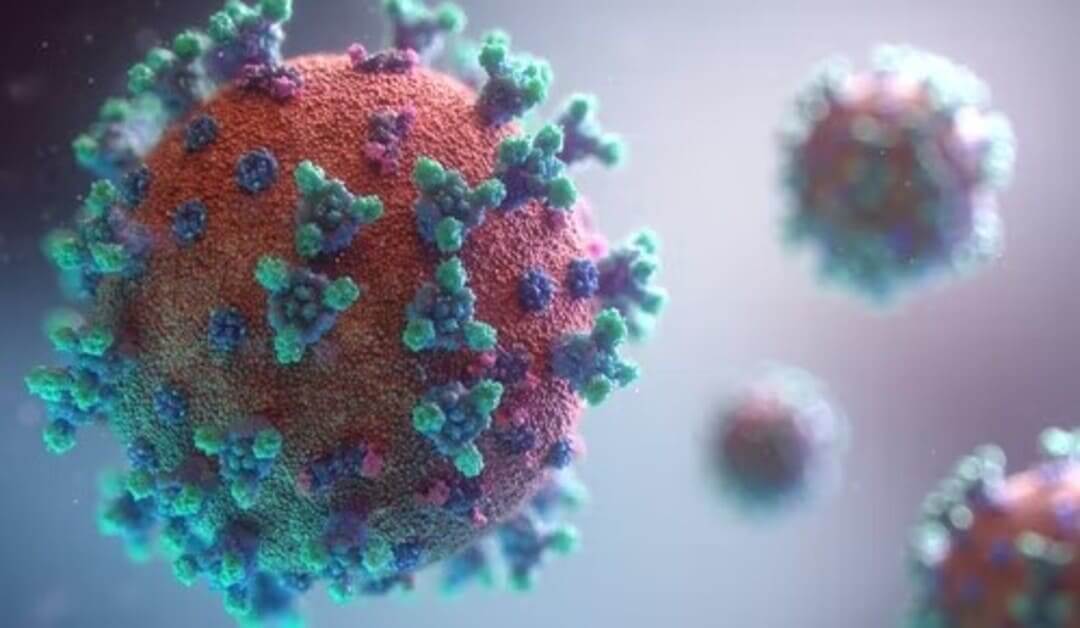General Health, Men's Health, Women's Health
China Corona Pandemic: why still Disinfecting Surfaces?
Regarding the China Corona Pandemic, many countries no longer consider the transmission of Covid-19 via surfaces relevant. However, China is said to use disinfection campaigns for purely political interests. In a one-minute video that went viral in China in early May 2022, three government workers in hazmat suits were seen spraying disinfectants throughout homes – under the TV, in the fridge, and on the couch.
On social media, many citizens questioned whether they would feel the same way at home if they contracted the virus.
Outside of China, concerns about catching the virus through surface contact have largely dissipated. The risk is relatively low, as many studies have shown. Disinfecting surfaces is now considered a relic from the early days of the pandemic.
But China seems to be stuck in a time warp from early 2020 in this regard. After the video circulated, a local government official said disinfecting the homes of Covid-19 patients was “consistent with an expert opinion”.
China is currently grappling with the largest rise in Covid cases in its history. Scientists say that if the government continues to present surfaces as a significant risk of infection, time and money will be wasted on the wrong things. Because measures to prevent transmission through aerosols are far more effective.
Continuing to prioritize disinfection is part of the state’s politicization of the crisis. This is to legitimize government actions. And it also fits with the narrative favored by China that the coronavirus may have been brought to Wuhan via frozen food.
Different ways to fight the pandemic
The international scientific debate on the extent to which surfaces contribute to the spread of Covid-19 is as good as over. A University of Michigan study published in April 2022 in the Journal of Exposure Science & Environmental Epidemiology estimates the chance of contracting the coronavirus from a contaminated surface is at 1 in 100,000. That’s well below the guideline that scientists have suggested as a tolerable risk.
While the risk is not zero, most public health organizations, including the World Health Organization, consider it so low that they do not justify any action other than recommending hand washing. Outside of China, most countries stopped requiring people to disinfect items long ago. The US Centers for Disease Control and Prevention (CDC) updated their guidance two years ago, in May 2020, to reflect this fact.
Instead, the overwhelming consensus is that aerosols and droplets transmit the virus much more easily than surfaces. The above Michigan study found that airborne transmission was 1,000 times more likely than surface transmission.
“People only engage in a certain number of health-promoting behaviors. It’s good to focus on the things that reduce risk the most,” says Amy Pickering, assistant professor of environmental engineering at the University of California, Berkeley. “That means wearing masks, keeping your distance, and avoiding crowded indoor spaces.”
Or do we have to stick to always boosting our immune system?
The media and government in China often cite research to justify ongoing concerns about surface transmission. Studies by researchers in Hong Kong, Japan, and Australia have found that coronaviruses can survive on different surfaces for days or weeks. However, many of these studies have not been peer-reviewed.
In addition, these laboratory results do not correspond to reality, says Ana K. Pitol, a postdoctoral researcher at the Liverpool School of Tropical Medicine in the UK.
“Of course, if you put a large droplet in a medium that protects the virus and then put it in an incubator, it survives for many days, sometimes even weeks,” she says. “But we should ask ourselves how long it will survive in a realistic situation.”
Ana K. Pitol
Experts fear China’s focus on surfaces comes at a price. Excessive disinfection can lead to chemical pollution, which in turn poses health risks. Chinese scientists had warned of this early in 2020. When the disinfection campaigns were carried out even more intensively after the spike in Covid-19 cases, their fears came true.
In Shanghai, some residents suffered from skin and mucous membrane irritation after their homes were carelessly treated with disinfectants. In addition, a dog is said to have died in this regard. Even if the funds are used correctly, extensive disinfection campaigns are not a good investment of resources, scientists fear.
Conspiracy theory about the origins of the corona pandemic virus
China has an ulterior motive as it continues to push over-purification. When people believe surfaces are dangerous, strict lockdowns become easier to justify. It also supports state-sponsored conspiracy theories about the origins of the virus. A retreat from this narrative could be politically sensitive.

In October 2020, Chinese health authorities reported that they had detected live coronavirus samples on imported frozen seafood for the first time in the Chinese city of Qingdao. Since then, the government and the media have repeatedly pointed out that it is possible to contract the coronavirus via packaging.
It has even been claimed that the very first Covid-19 outbreak in Wuhan was caused by a virus imported from Italy or the United States. The idea became even more popular this year when the more contagious omicron variant emerged.
In January 2022, the first local case was reported in Beijing. Because the patient had not traveled to any place where there were active Covid-19 cases, health officials suspected the person had been exposed to the coronavirus through the mail from Canada.
Although it could not be proved that the viral material found on the letters was the cause and not the result of the illness, the official contact tracing report said it “is not excluded that the person was infected by mail sent from abroad and was infected with the virus.” Tips for disinfecting international packages followed.
Around the same time, other Chinese cities, including Shenzhen and Zhuhai, also reported the first cases of omicron patients coming into contact with imported goods at work. That fueled the rumor mill.
When asked whether the omicron variant had a higher risk of being transmitted via surfaces, Wu Zunyou, the chief epidemiologist at China’s Ministry of Health, answered vaguely. While acknowledging that droplets are the main mode of transmission, he raised again the specter of infection via packaging:
“The risk of contaminated surfaces causing an infection is relatively low. But if there is repeated touch and there’s no hand or personal hygiene, and if protection is not respected, the risk increases significantly, which is why we regularly test people who work in cold chain logistics and shipping.”
Wu Zunyou
Surface cleaning is cheaper than air filtration
The stark contrast between understanding the risk of surface transmission inside and outside of China clearly shows that China’s public health policy follows political goals rather than scientific facts.
“Public health actions have become part of this political mission. They are primarily driven by state interests, with the aim of strengthening state control and power,” says Yangyang Cheng, a research fellow at Yale Law School who studies the development of science and technology in China.
The surface transmission narrative also serves another purpose in the current context, says Cheng. “Cleaning the surface is far cheaper than filtering the air. Because of the high investment, very few countries seem to do it. Either they don’t care like the US, or they do performative actions like China,” says Cheng.
When the cattle plague broke out locally in the Chinese province of Jilin in April 2022, a total area of 61,978,900 square meters was disinfected – the equivalent of around 8,500 soccer fields. And that is in just one province. During the Beijing 2022 Winter Olympics, robots cleaning surfaces and spraying disinfectants offered China a chance to showcase its technical prowess.
Recently, however, there have been some small signs of change. On May 17, 2022, Zhu Renyi, an official with the Shanghai Health Authority, warned against over-disinfection in a press conference, likely in response to reports of failed disinfection campaigns. He explicitly opposed the use of robots and drones, but insisted delivery packages must still be disinfected: “[Packages] should not be distributed until half an hour has elapsed after a thorough disinfection.”


